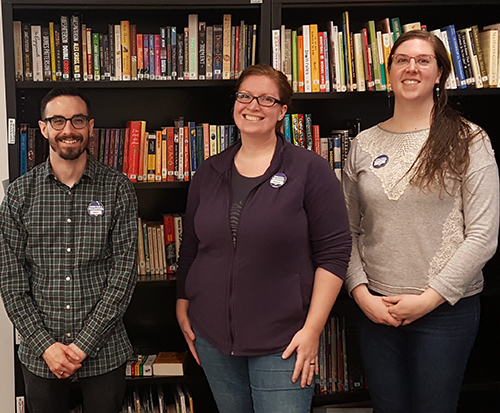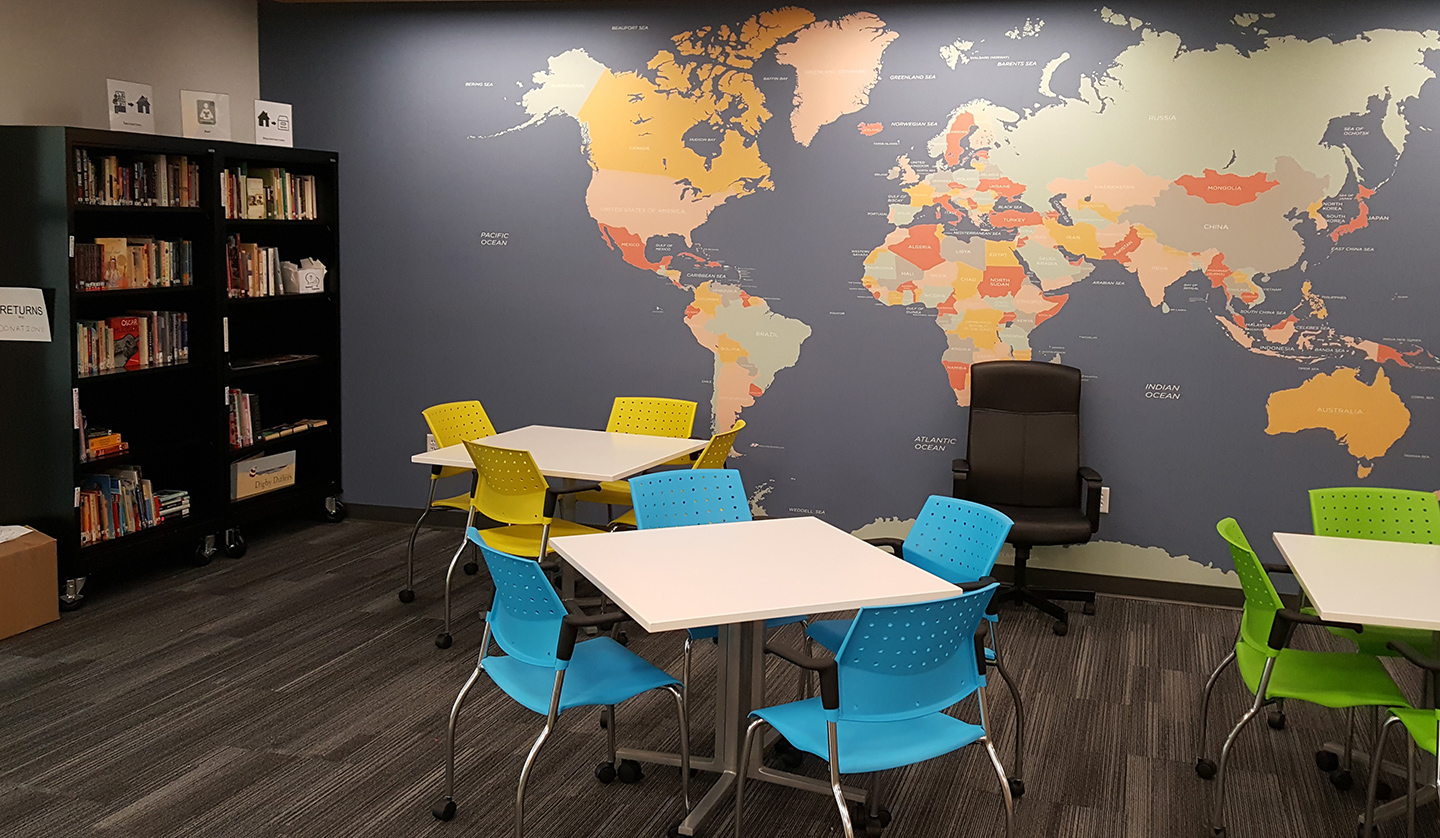It was a daunting idea: build a library from scratch, build it with no existing budget, and build it for immigrants and refugees speaking a multitude of languages, some struggling to master basic English skills. Still, when a staff member at the Tacoma Community House proposed the idea to iSchool MLIS student Seth Williams, he jumped at the opportunity.
The library was a good fit for his iSchool Capstone project. More importantly, it lined up with Williams’ long-time passion for helping refugee and immigrant communities. “This is something I really care about, seeing newcomers to our country supported and helping them feel like they have a wider community to help them out,” he says.
He was drawn to the Tacoma Community House by its long history of helping immigrants, refugees and others along a path to self-sufficiency. The nonprofit community center, founded in 1910, offers immigration support, citizenship courses, GED classes, employment support, English Language Acquisition (ELA) training and more. In 2018, the center served around 3,200 clients from more than 110 countries.

When the center doubled its physical space last year, it finally had room for the small library. Williams sat down with volunteer services manager Kerrisan Meyer and volunteer Kristen Howard, who had proposed the project to him, and began planning a vision for what the library would look like.
When Meyer and Howard handed off the project to him, Williams realized he couldn’t do it alone: “I was sort of overwhelmed.” He enlisted a team of iSchool Master of Library and Information Science students, including partners Annalise Asé, a public library service assistant with knowledge in cataloging collections, and Jori Grant, a school librarian whose connections to the bilingual publishing world were crucial in getting the right materials. “It can be very difficult and expensive to find foreign-language materials,” says Williams.
Soon the team was collecting money for the project through a GoFundMe site, collecting materials through book drives at community churches, and receiving targeted book donations through their Wish List site on Amazon. Their efforts raised $400 and brought in an estimated 600 books. “The team was really innovative with ways to gather high-quality books on a small budget,” says Meyer.
To ensure the library was built on clients’ needs, the team conducted surveys at the center. Though questions were designed to be easily understood, there were still language barriers. “We tried to explain what the project was, who we were and where we were from, but a lot of things got lost,” says Williams. “Still, we were able to get good data on reading preferences and library use.”
The user data showed clients wanted English books with easy comprehension levels, including children’s and young adult books. Clients also wanted resources to help them learn English, as well as reading materials in their native languages.
The surveys also showed many clients had never used a public library. “A lot of public libraries don’t offer many materials in the clients’ native languages,” says Williams, who helped collect materials in everything from Spanish to Vietnamese, Arabic and Ukrainian.
Before they started shelving, the team sorted through the donated books, weeding out those with damage, offensive content, or anything overly academic. Classifying them was its own challenge. How do you organize a collection for clients who may be unfamiliar with traditional classification methods? The team designed a simple system with intuitive color-coding and icons stuck on book spines.
“Even if your English is not good, you can match up the stickers,” says Asé.
The library opened Feb. 27, with eager clients filing in and out throughout the day. “They were excited to know that they would have this resource so easily accessible,” says Amy Diehr, the center’s education services manager.
A little more than two weeks later, the center and its new library were shut down due to the coronavirus. So were team plans to collect follow-up data on library usage. So team members turned to other ways to help.
They revived plans for a web dashboard for the center. “I had taken a coding class at school and had just enough skills to create what we wanted,” Williams says. The simple-to-use dashboard links to everything from English practice exercises and international news to information on public libraries, including how to apply for a library card.
The team also took on the task of creating an in-depth training packet for future library interns, going over duties, explaining the organization system, and outlining the library’s mission so the team can pass the project on.
“It is my hope that a future iSchool person will be involved in this. I can see this project becoming several Capstones long,” says Williams.
Despite the huge challenges, he’s happy with the outcome. “This project has definitely surpassed my expectations for it.”
